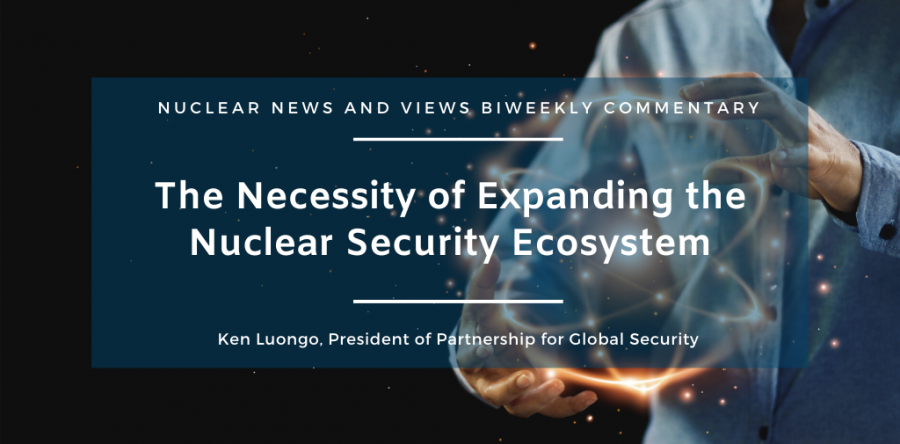The widespread wreckage created by the novel coronavirus offers an opportunity to rethink the status, trajectory, and responses to many global security issues. But, the future of nuclear security is particularly vital. In order to be relevant to the real world, the nuclear security silo needs to be connected to the larger ecosystem of global challenges.
The nuclear weapon and material guardrail systems are highly specialized and were created during and after the Cold War to manage nuclear weapons expansion and proliferation. They expanded after 9/11 to meet new challenges, particularly nuclear terrorism. Now these systems are under increasing pressure from a world in disarray and beginning to unspool.
There are a number of reasons for this, but it is difficult to ignore that the issue set is isolated and increasingly out of synch with how the world and its challenges are evolving. Unfortunately, the creation of modernized, multifaceted nuclear policy mechanisms, more suited for today’s realities, is badly lagging.
One reason is a lack of adequate financing to support a creative, coordinated, and vibrant future-focused nuclear policy community. The scale of global philanthropic resources devoted to innovative nuclear weapons and security policy is less than $50 million per year. This creates an adversarial competition for limited resources and undercuts the need for effective community-building and collaboration. It also creates a constricted professional environment that creates barriers to entry and limits the advancement of young professionals, who are the lifeblood of the future.
By contrast, Amazon founder, Jeff Bezos, recently pledged $10 billion to fight the threat posed by climate change, an issue that already is well funded by philanthropies.
This mismatched scale of resources is dramatic, given that both issues pose existential threats to humanity. But it also reflects some realities. The public expects governments to effectively manage nuclear challenges, which they have, despite a number of close calls. They don’t have a deep appreciation for the work or influence of nuclear experts outside the government. Much of this work is done behind the scenes by performing analysis, deciphering satellite images, engaging government officials, reading murky tea leaves to ascertain official nuclear policies and priorities, and analyzing technical ephemera.
By contrast, public and media interest in protecting the planet from climate change has grown in intensity, in part because it has political and celebrity leaders, and the mechanisms for addressing the concerns are tangible technologies, not paper policies.
But there is a significant crossover between the nuclear and climate issues that largely is being ignored. International security is now a complex confluence of military, diplomatic, environmental, technology, and economic issues. For example, developing economy nations, like China and India, are driving global carbon emissions, are nuclear armed, and have aggressive nuclear power plans. They and other developing nations must contend with growing populations, inconsistent access to electricity, and spiraling water and food crises. This is a package of interrelated issues to which nations increasing are seeking more than single issue answers and policies.
There is a clear nexus between the global climate and nuclear challenges of this century. But the pairing is non-traditional and alien to many. However, continuing a constrained scope of nuclear security very well may imperil the future of its policy community. The international environment continues to churn in unpredictable ways and adaptation is essential for survival.
Ken Luongo, Partnership for Global Security


